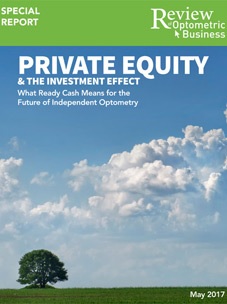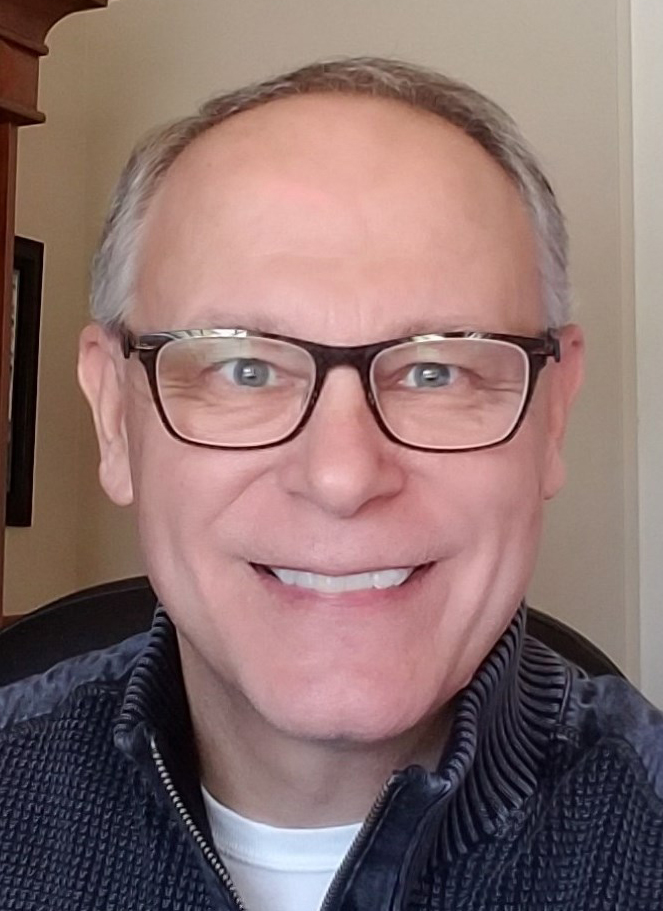When considering an exit strategy, don’t rush to sell your greatest asset.
By Neil Gailmard, OD, MBA, FAAO
May 31, 2017
I enjoyed reading the recent ROB Special Report “Private Equity & the Investment Effect,” authored by Brian Chou, OD. The report presents an excellent overview of the trend for selling an independent private practice to an investment company as a possible exit strategy, and it looks at the concept of doing so at a younger age than that of traditional retirement.
As a management consultant, I often work with optometrists who are planning their exit strategy. I enjoy these sessions with doctors of all ages because it provides an opportunity to think big and out of the box. What if you could make a change that would greatly improve your life? That is exciting!
While many unique variables exist, let’s do a quick review of the possible career paths for ODs who already own their practice:
• Do nothing and remain in the traditional practice model where the OD/owner manages the practice and sees most of the patients. Presumably, the owner will sell the practice when ready for full retirement.
• The OD/owner has partners, or brings in new partners, with a plan that they will buy the OD’s ownership share at some future time.
• The OD/owner sells the practice and becomes an employee of the new owner. The new owner could be another optometrist, an ophthalmologist, an optical chain or a private equity firm.
• The OD/owner sells and exits the practice earlier than retirement age with the goal of living off current assets or beginning another line of work.
Another approach is one that I have followed in my own professional life, and that I helped other optometrists achieve through my work at Prima Eye Group, now part of IDOC. I call it the CEO model. The idea is to not sell the practice or take in new partners, but continue to own and operate it as a business, employing associate ODs to see most of the patients. This career path is not truly an exit strategy because the OD does not relinquish ownership, but it can be an exit from clinical patient care.
The problem with doing nothing
If you continue to practice in the traditional model, you may be so busy with administrative and clinical duties that you miss out on enjoying life. Either that, or you might need to keep your practice rather small.
The problem with selling early
It is not unusual for an optometrist to become somewhat burned out over the course of a career, especially if the OD is a practice owner, a clinician and juggling a family and personal life. Many optometrists love seeing patients, but gradually, after thousands of encounters, it can get old. At the mid-career level, the OD/owner may have accumulated a significant amount of wealth, including a practice that has very high value.
It is tempting to think about cashing out, but here are the big things that can go awry:
• You may not have enough money. Depending on your age, there may be many years of living ahead. Selling the practice may liquidate a nice asset, and you can invest the proceeds, but your big source of income has ended.
• It may take more income than you think to support the nice lifestyle you are accustomed to. Ask yourself if you really want to live with a low income for decades to make your savings last.
• Many people find retirement to be boring, especially if they are younger. You might try a second career, but there is no guarantee it will work out, and you could be back to working again, but in a field you may not like as much as optometry.
The problem with partners
I know many practices that have partners who get along very well and it all works great. I also know many where somebody is not happy. There are two big problems with partnerships: First, you have to share the business profit with others; and, second, you have to share the decision-making. Partners do not agree on everything. Generally speaking, I recommend against adding more partners.
The problem with selling and staying on
An OD/owner who is feeling burned out might well reason that, in giving up running the business, they can concentrate on what they really love: clinical eyecare. The problem is that they will be an employee.
There is nothing wrong with being an employed OD, of course, but it may be more difficult once you have been the owner. And the new management may not be as easy to work for you as you hope. Think about having someone else tell you how long your appointments should be. How will you feel when you have used up all your vacation time, but you really would like more? What if the new owners change the practice culture from the one you built?
I understand that OD/owners may come to a point where they need to give up some aspect of their work to have a great life. But rather than give up the business side, I recommend you give up the patient care side (at least partially).
The CEO Model
The CEO model simply follows the mantra of working on your business, not in your business. The practice owner hires other ODs as well-compensated employees to see the majority of the patients. This frees up the owner to enjoy life, or to spend more time on practice management. Practices usually flourish under this model because most of them need more management, leadership and vision.
The OD/owner can see as many or as few patients as desired, and they can follow any time frame for reducing patient care. One thing is virtually certain under this model: The exit timeline becomes much further away. An OD who no longer needs to care for patients feels like a huge weight is lifted. Life is suddenly much more flexible.
Your practice is like the goose that lays the golden eggs. Don’t sell it. The income stream is more valuable than the one-time asset sale. Generating passive income from a business is a wonderful achievement, and OD/owners can easily have that. You will still get the one-time asset sale later anyway.
For Further Reading
The following books can help you plan an exit strategy and implement the CEO model of optometric practice:
• E-Myth Revisited by Michael Gerber
• Start With Why by Simon Sinek
• Drive by Daniel Pink
• Customer Satisfaction is Worthless by Jeffrey Gitomer
• The 7 Habits of Highly Effective People by Stephen Covey
• Unshakable by Tony Robbins
 Neil Gailmard, OD, is Chief Optometric Officer at IDOC and CEO at Gailmard Eye Center in Munster, Ind.
Neil Gailmard, OD, is Chief Optometric Officer at IDOC and CEO at Gailmard Eye Center in Munster, Ind.

























